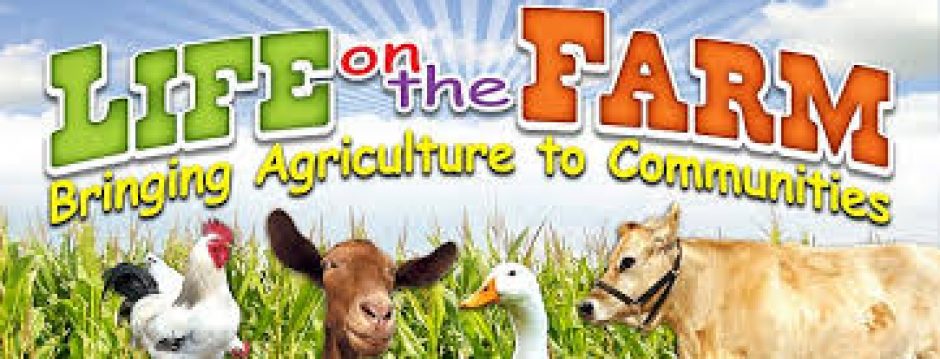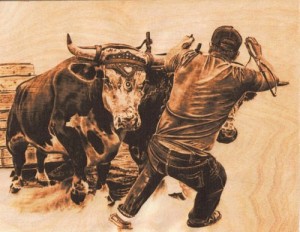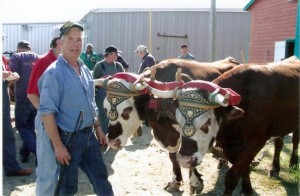One of the most popular sports at the Shelburne County Exhibition is the “ox-hauls.”
Oxen have been used for centuries to haul felled trees from the forest, haul hay to the barn, transport families to church in wagons, plough land, transport extremely heavy loads etc. These animals are typically castrated steers that are normally considered fully trained at the age of four and only then become known as oxen.
In this area the ox is a likely a Hereford and Durham cross. A Hereford has an all-white face and a Durham is generally all red which makes for unique markings on their faces called “brockle face.”
Working oxen are taught to respond to the signals of the ox-driver or teamster. These signals are given by verbal command and body language, reinforced by a goad, whip or a long pole. Verbal commands for draft animals vary widely throughout the world but in North America, the most common commands are:
• Get up: go
• Whoa: stop
• Back: back up
• Gee: turn to the right
• Haw: turn to the left
Their teamster makes or buys as many as a dozen yokes of different sizes for each animal as it grows. Pairs of oxen were always hitched the same way round, and they were often given paired names traditionally calling the near-side (left) ox of a pair by a single-syllable name and the off-side (right) one by a longer one … but this is not always the case. Lion & Bright, Turk & Dan are popular team names.
Oxen can pull heavier loads, and pull for a longer period of time than horses, however, they are also much slower than horses, which has both advantages and disadvantages. Oxen in general are far less excitable than horses.
Their pulling style is steadier, but they cannot cover as much ground in a given period of time. For agricultural purposes, oxen are more suitable for heavy tasks such as breaking sod or ploughing in wet, heavy, or clayey soil. When hauling freight, oxen can move very heavy loads in a slow and steady fashion.
Oxen can pull heavier loads due to the use of the yoke, which was designed to work best with their neck and shoulders.
A yoke is a carved wooden beam, normally used between a pair of oxen to enable them to pull together on a load when working in pairs, as oxen usually do. Yokes are fitted to the individual animals and their teamster makes or buys as many as a dozen yokes of different sizes for the animals as they grow.
There are several types of yoke, used in different cultures, and for different types of oxen. A pair of oxen may be called a yoke of oxen, and yoke is also a verb, as in “to yoke a pair of oxen”.
Working oxen usually require shoes. Since their hooves are cloven, two shoes or ox cues are required for each hoof, unlike the single shoe of a horse. Ox shoes are fitted in symmetrical pairs to the hooves.
Rules of Ox-Hauling: Teams are hooked to a sled or “drag” on which measured boxes of 100 pounds each are added at the conclusion of each try, at the discretion of the teamster. Minimum starting loads are the weight of the team. Lines will be placed 9 feet apart and both team & teamster have to stay within those lines while actively hauling. A team must be in the hauling position to be disqualified for stepping over the lines. Pulling distance shall be 36” for each successful haul; oxen have 3 starts to move the load 36” within a 15 minute time limit. All teams pull in the same direction and pull to finish. The winner is determined by averaging the heaviest load hauled, by the weight of the team. (i.e. if the team weighs 3350 lbs and haul a weight of 12,200 pounds, their percentage would be 3.64)
At Shelburne EX, teams must weigh at least 1500 lbs. in order to be eligible to compete in the hauls.
In Memory – Sandy Harris, Teamster


